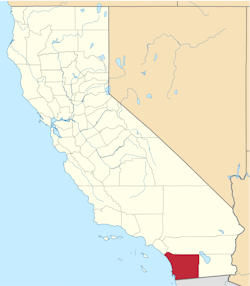San Diego County Water Authority marks 25th anniversary of asset management program
SAN DIEGO, CA, JANUARY 26, 2016 -- Crews from the San Diego County Water Authority on Friday finished inspecting a five-mile segment of pipeline using a pioneering technology that advances the agency's legacy of innovative and money-saving initiatives to protect the region's water infrastructure.
The project marked the 25th anniversary of the Water Authority's Asset Management Program, which has saved water ratepayers more than $200 million by prioritizing repairs, avoiding unnecessary work and maximizing the service life of the region's large-diameter pipeline system.
As the wholesale water supplier for San Diego County, the Water Authority operates and maintains 310 miles of pipeline that range in diameter from 20 inches to 9 feet -- large enough to drive a car through.
The Water Authority launched its comprehensive Asset Management Program, then known as the Aqueduct Protection Program, in 1992. It started with visual inspections and pipeline "sounding," a low-tech method in which crews walked through empty pipelines, tapping them with metal rods and listening for hollow sounds linked to weak spots.
Over the past three decades, the Water Authority has been an early adopter of much more sophisticated technologies such as Remote Field Eddy Current in 1999 and Acoustic Fiber Optic real-time monitoring in 2006. In 2011, the Water Authority was among the first water agencies in the nation to deploy Magnetic Flux Leakage for assessing water pipelines, borrowing the technology from the oil industry.
"Proactive pipeline assessments typically go unnoticed by the public, but they are central to our never-ending efforts to provide safe and reliable water to 3.3 million residents," said Mark Muir, chair of the Water Authority's Board of Directors. "They help ensure water will come out of people's taps when they expect it, and they have had the very real effect of ensuring our maintenance money is spent wisely."
The Water Authority also has embraced a cutting-edge system for collecting and managing voluminous records generated by high-tech pipeline assessments. It relies on a web-based tool the Water Authority developed to bring different types of data together for streamlined analysis. In addition, the agency devised a three-dimensional interface using Google Earth to visualize levels of risk related to pipeline breaks at specific points along the route.
"For 25 years, our Asset Management Program has served as a model for other agencies looking for newer and better ways to anticipate infrastructure needs," said Jim Fisher, the Water Authority's director of operations and maintenance. "We were among the first water agencies to take such a proactive approach to managing our pipelines and other key assets, and we continue to evolve and adapt to enhance our capabilities."
At this month's inspection project in Lakeside, the Water Authority assessed the condition of one of its oldest and most difficult pipelines to access – a bar-wrapped concrete cylinder pipeline installed in 1947 that delivers raw water to Helix Water District's R.M. Levy Water Treatment Plant.
Water Authority crews teamed with Pipeline Inspection and Condition Analysis Corp. of Alberta, Canada, to examine five miles of the pipeline between Slaughterhouse Canyon Road and State Route 67. It was the Water Authority's first deployment of Remote Field Technology, which measures pipe wall thickness and anomalies by detecting changes in electromagnetic fields.
The flexible design of the RFT tool, using inflatable components, allowed for its installation through a pipe entry point that was smaller than the pipeline's 39-inch diameter. The tool is capable of detecting smaller areas of corrosion than other electromagnetic technologies and is also more cost-effective to use than other technologies – another example of the Water Authority's visionary efforts to safeguard the region's water supplies while spending money wisely.
For more information about the Water Authority's Asset Management Program, go to www.sdcwa.org/asset-management.
RELATED ARTICLES
Water Authority, City of San Diego measuring interest in potential renewable energy-supporting pumped storage project
Smart water pilot projects in San Diego receive funding
